Low-code or no-code platforms such as Microsoft Power Platform are transforming app and software development by drawing in new users with a low barrier to entry and shallow learning curve. Featuring capabilities like prebuilt templates, drag-and-drop simplicity, and quick deployment, Microsoft Power Platform helps users of all specialties (IT teams, business analysts, citizen developers, and more) feel inspired, excited, and innovative as they learn.
Why adopt low-code?
Low-code development can facilitate your company’s digital transformation.

These feelings of satisfaction only increase as users further embrace these platforms and discover new possibilities. Their user-friendly model means a rewarding upskilling experience, one that instills confidence—even those not from a traditional software background—to see the value of their work contributing to team success. Of those surveyed in a recent Microsoft study, 82 percent of low- or no-code users agree that the technology helps provide an opportunity for software users to improve their development knowledge and technical skills. In addition, the use of no-code or low-code platforms or apps is shown to have led to an 83 percent positive impact on work satisfaction and workload by users, and an 80 percent positive impact on morale by users.
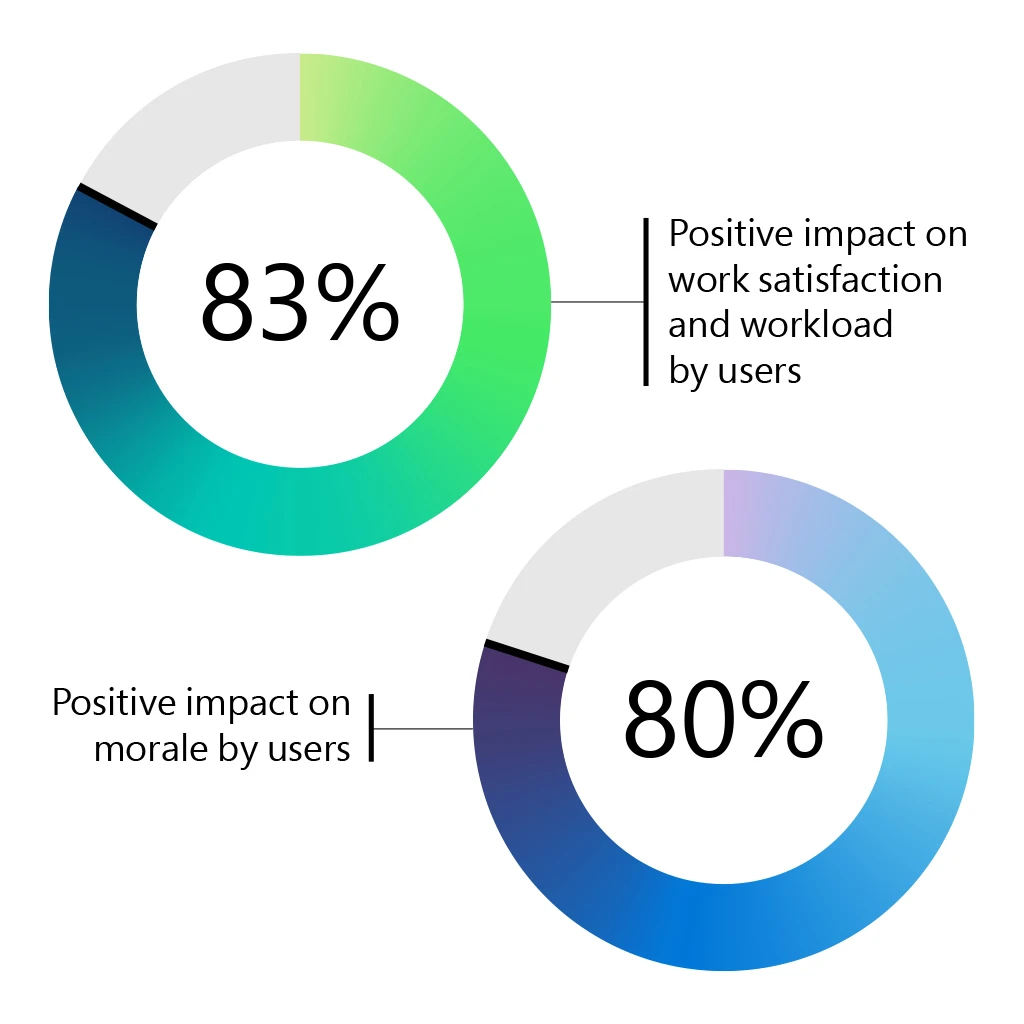
“(Low- or no-code) gives me the confidence to perform my job above what is expected by my employer.”—User, Retail Industry
Connecting employees with fulfilling upskilling opportunities
The learning opportunity of low-code or no-code platforms is exactly the kind of professional development that today’s workers are looking for. More than 80 percent of users and potential users of low-code or no-code platforms report that they would be more willing to work for a company that invests in their technical upskilling.
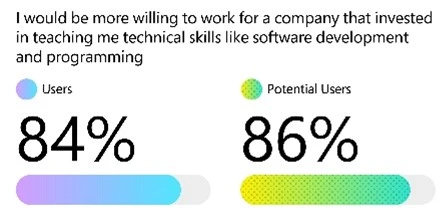
As users explore skilling in software development and programming, employers that offer training on low-code or no-code platforms see high rates of participation. Users of these platforms are more likely than potential users to report that they’ve taken advantage of relevant training opportunities within their organization (78 percent versus 41 percent). They also have a more favorable perception of their organization’s big-picture investment in technical upskilling, with 63 percent of users agreeing compared to 36 percent of potential users.
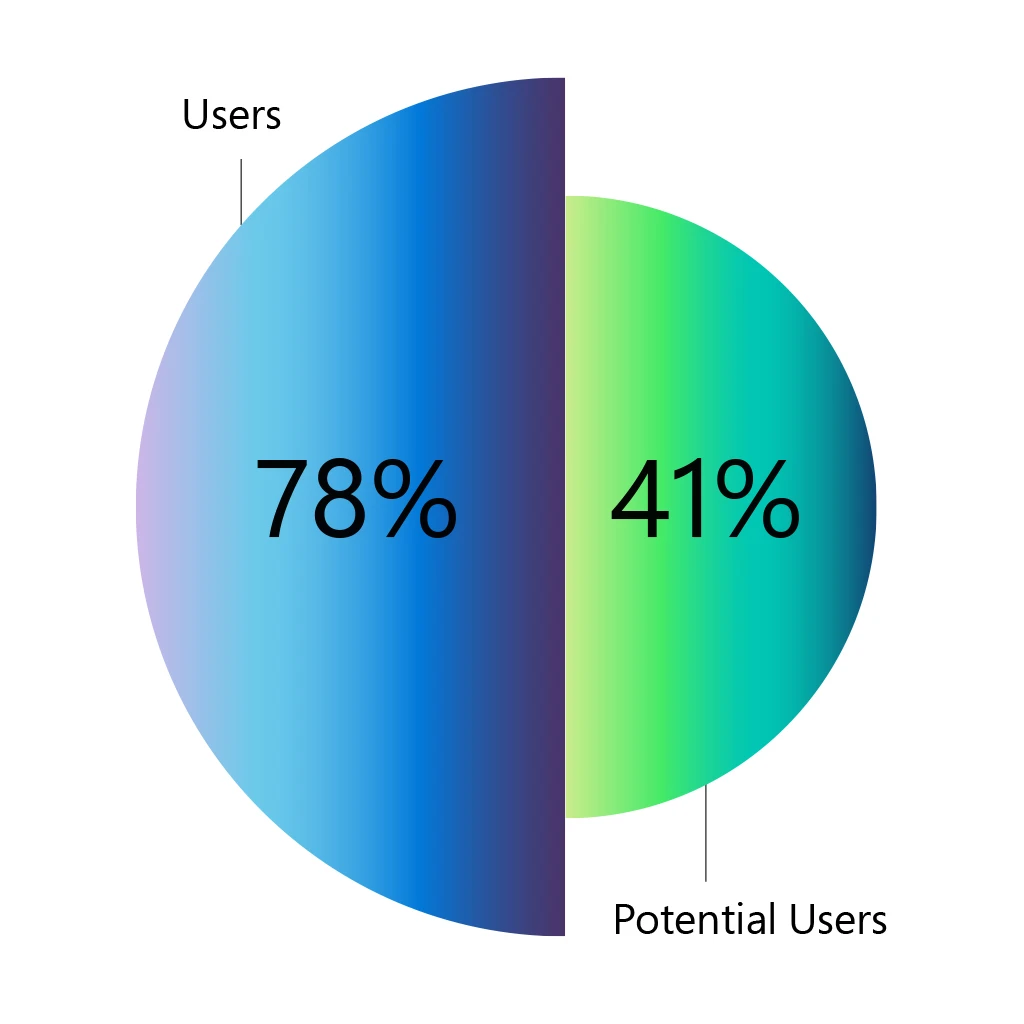
By leveraging technology like Microsoft Power Platform, business leaders can foster a strong learning culture that retains and develops employees. These benefits also directly address key concerns for Business Decision Makers (BDMs)—driving innovation and attracting and retaining talent.
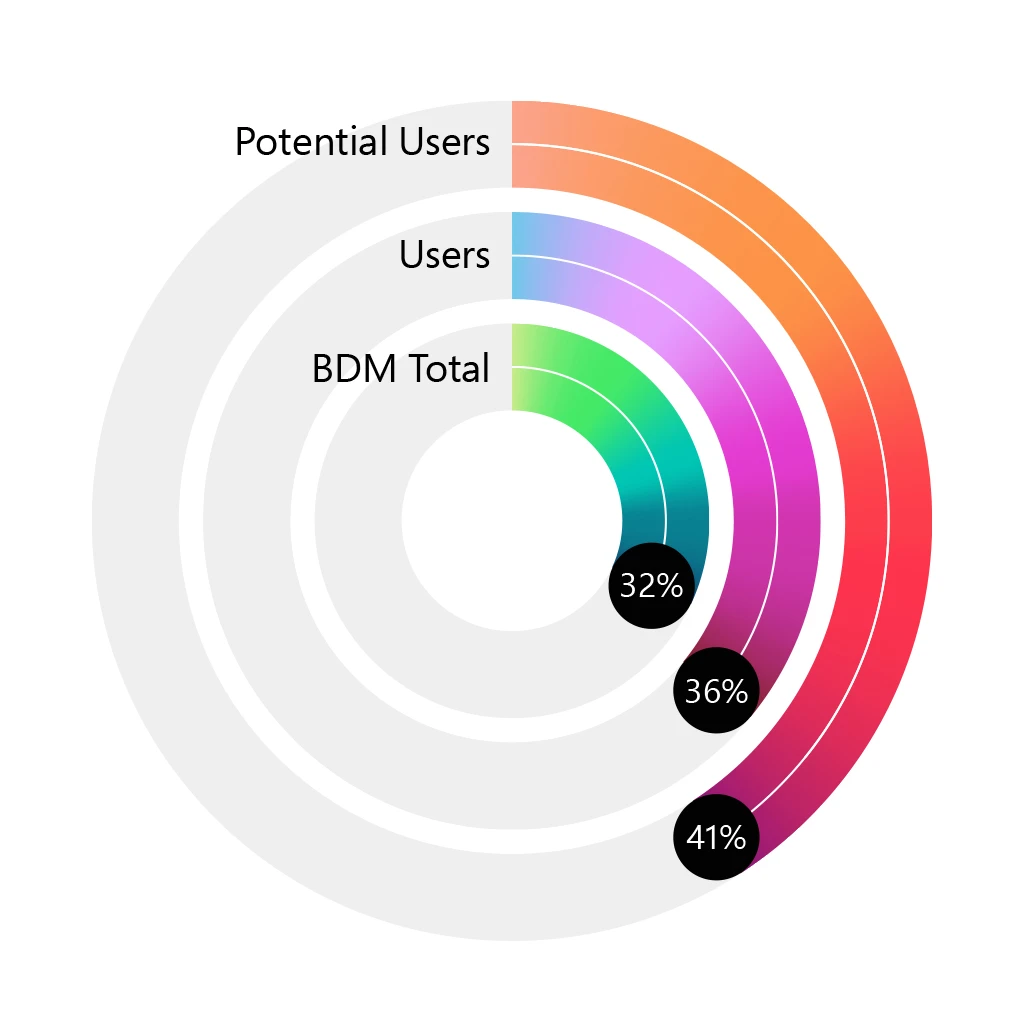
The path to employee retention
The call to invest in employee development is urgent: 71 percent of potential users are more doubtful of their futures with a company that does not invest in their technical skills. Leaders and BDMs must critically examine the opportunities that they are offering employees and how they support their IT teams, business analysts, and developers of all identities. When it comes to offering meaningful learning opportunities and a clear path for advancement, low-code or no-code development platforms might be the answer they have been looking for.

Taking on tech’s gender problem
Embracing low-code or no-code platforms can also help combat the IT industry’s gender disparity. Currently, fewer than 20 percent of cloud computing professionals are women. In addition to filling the aforementioned skills gap, gender-diverse businesses are shown to perform better1, and advancing gender equality could add up to $13 trillion to global GDP in 2030.2
Meanwhile, women in the industry are less likely than men to feel they are ahead of the curve in their technical skills—and yet, the survey revealed women are four times more likely to report restrictions in purchasing or testing new technology for their career growth. Investing in Microsoft Power Platform is one way to immediately support these women in their career development and promote gender equity within one’s organization.
BDMs fear lack of awareness creates a barrier to investment
If low-code and no-code platforms have such immense potential for company culture, why are they not more widely adopted? An overwhelming majority of BDMs and users (71 percent and 76 percent, respectively) point to a lack of awareness around potential use cases for Microsoft Power Platform or other programs. Also ranking highly are cybersecurity concerns and the cost and training needed for their employees to maximize the value of these platforms or apps. As with any business investment, leaders want to be sure that they will be getting a meaningful return. Choosing a new development platform will have an impact on people and processes across the organization, a reshaping that must be duly considered.
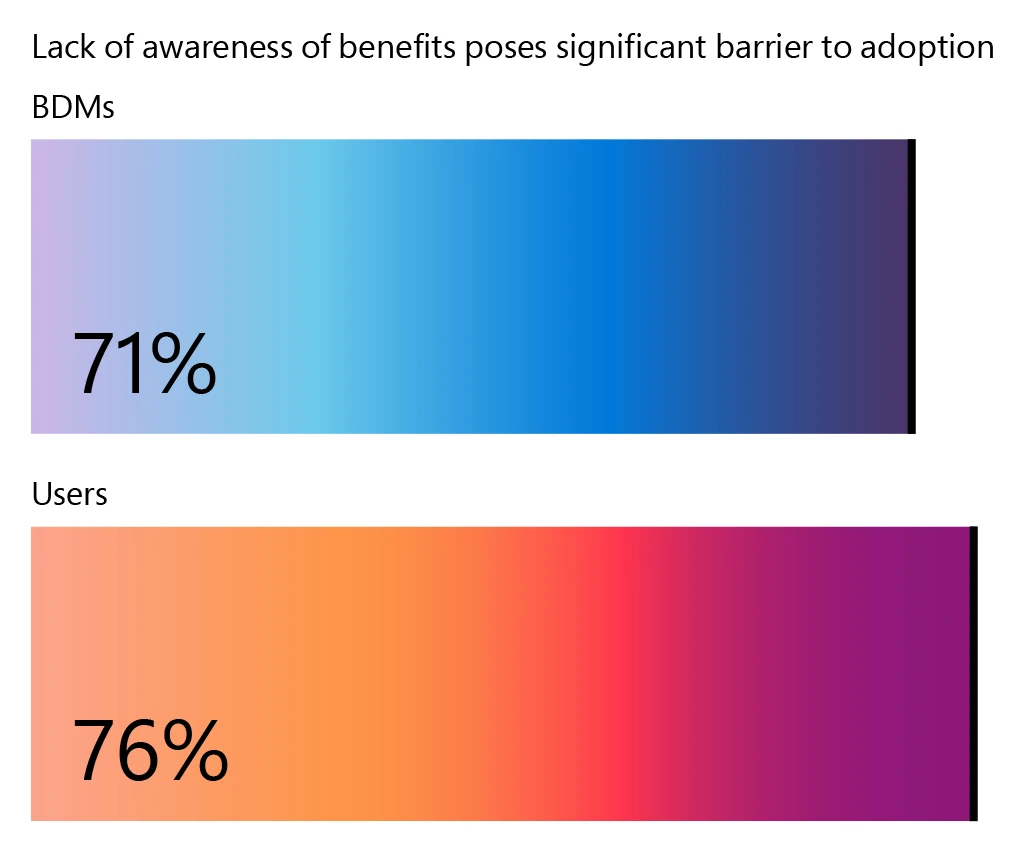
Once adopted, the results quickly speak for themselves and kick off a cycle of innovation—but securing the initial investment is proving to be a barrier. BDMs are more likely to know how to navigate their organization’s decision-making process; they play a key role in acting as a go-between with users to leverage the necessary proof points to advocate for organizational investment. Between the clear cultural benefits and users’ success stories, BDMs have a compelling case for adoption to bring to the C-suite.
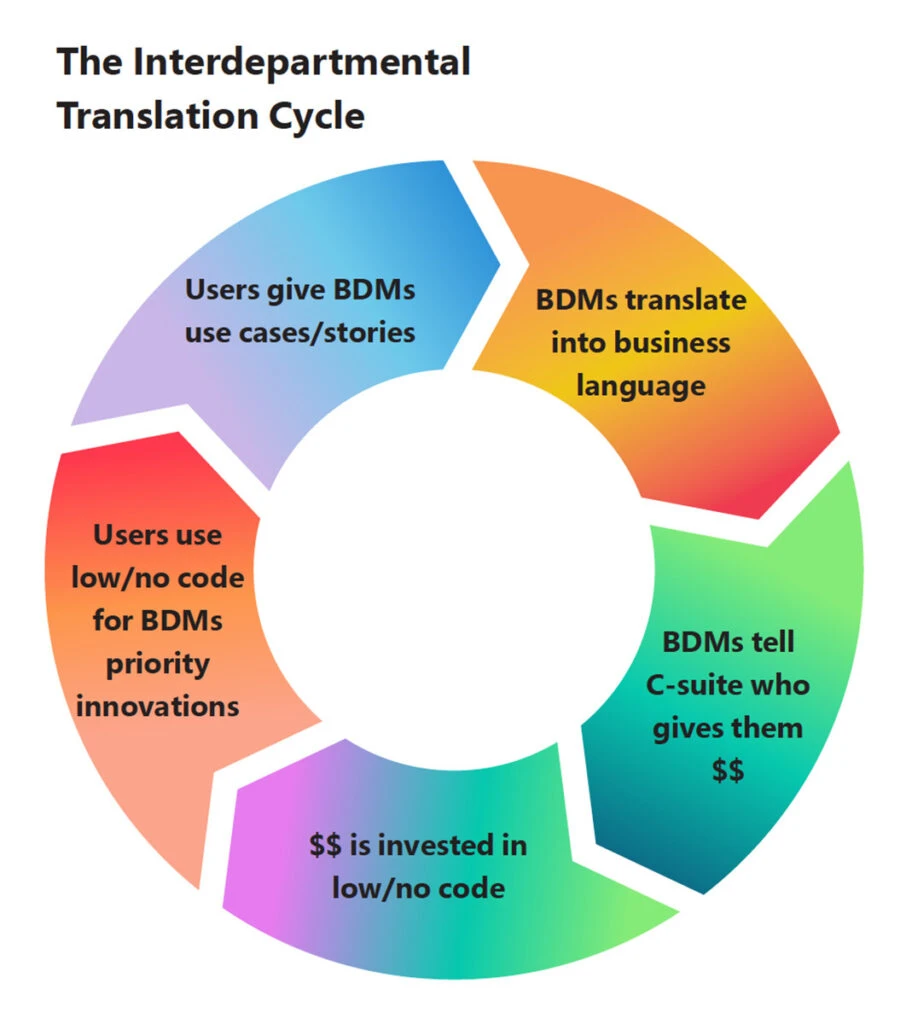
Collaboration between BDMs and users critical for impactful use cases
BDMs should also recognize the value in coming together with developers and low- or no-coders to explore new use cases for Microsoft Power Platform. Events like Microsoft Build (May 24 to 26, 2022) are great opportunities to connect with peers, experts, and others from a variety of industries, sharing success stories and making a compelling case for investment in low-code and no-code platforms. Microsoft Build will feature a series of live programs and other immersive experiences exploring the latest innovations and tools for a trusted, integrated data platform.
Employees at all levels are looking for a company worth committing to, and a demonstration of reciprocal commitment is a positive indicator of a healthy workplace culture. By activating Microsoft Power Platform and other low- or no-code options as an opportunity for development, BDMs have the capability to foster a loyal, innovative, and inclusive workforce.

Methodology and Audience Definitions:
The Low Code Productivity Impacts Trend Index survey was conducted by an independent research firm, Edelman Data x Intelligence, among 322 Users of low code/no code platforms or apps, 300 Potential Users of low code/no code platforms or apps, 150 Business Decision Makers looking to hire for low code/no code skills, and 150 Business Decision Makers already using low code/no code platforms or apps across their organization. This survey was 15 minutes in length and conducted online in the English language between April 6, 2021 and April 25, 2021.
Audiences mentioned in the report are defined as follows:
- Users: self-selected at time of survey fielding as familiar with low code/no code platforms or apps and using them professionally or personally, including:
- Professional Users: those currently using low code/no code platforms or apps for their job including information technology, computer engineering/developers, or those in functions such as marketing, communications, or HR
- Citizen Users: those currently using low code/no code platforms or apps for personal use or side projects
- Potential Users: self-selected at time of survey fielding as familiar with low code/no code platforms or apps, but not currently using them professionally or personally and interested in doing so in the next 12 months
- Business Decision Makers: self-selected at time of survey fielding as those in mid to upper job levels (i.e., SVP, VP, Sr. Director, General Manager, EVP, C-Suite, President, etc.) who have at least some influence on decision-making related to hiring, budgeting, employee benefits, internal communications, operations, etc.











You must log in to post a comment.